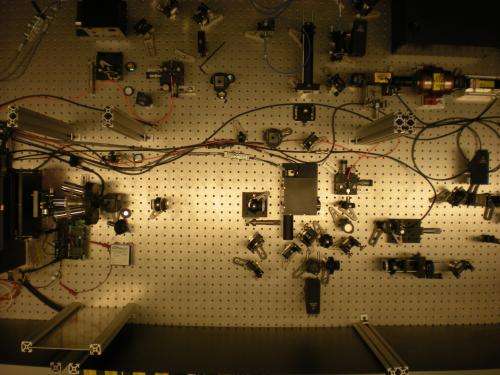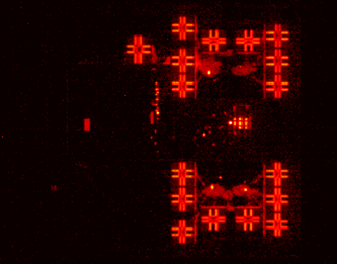Advanced software and equipment to aid in the fight against counterfeit microelectronics in U.S. weapons and cybersecurity systems has been transitioned to military partners under DARPA's Integrity and Reliability of Integrated Circuits (IRIS) program. Researchers with SRI International, an IRIS performer, announced today they have provided Advanced Scanning Optical Microscope (ASOM) technology to the Naval Surface Warfare Center (NSWC) in Crane, Indiana, where it will join an arsenal of laboratory equipment used to ensure the integrity of microelectronics.
The ASOM technology housed at NSWC Crane will help engineers provide forensic analysis of microelectronics, including integrated circuits (IC) confiscated by law enforcement officials. The ASOM operates by scanning IC using an extremely narrow infrared laser beam, which probes microelectronic circuits at nanometer levels, revealing information about chip construction as well as the function of circuits at the transistor level.
"The Advanced Scanning Optical Microscope—one of many IRIS-developed technologies—offers important hardware security and reliability assurance capabilities," said Kerry Bernstein, DARPA program manager. "These tools are optimized to support the mission of ensuring trust in microelectronics in DoD labs such as NSWC Crane."
Over the past 50 years, the worldwide IC market has expanded dramatically. In 2013, the import value of integrated circuits was $231 billion, up 20 percent from the previous year. As a result of the globalization of the IC marketplace, most U.S. production of advanced circuits has moved to offshore foundries in Taiwan, Singapore, Korea, Japan and China. While offshore production has served to decrease chip prices globally, it has also made evaluating the integrity of circuitry components increasingly difficult.
The DoD is a small force in the worldwide IC market, responsible for only about one percent of total demand. Given the relatively low rate of IC consumption by the U.S. military, the DoD has limited ability to influence global production and be confident that parts are delivered as specified.
"Without the ability to influence and regulate the off-shore fabrication of IC, there is a risk that parts acquired for DoD systems may not meet stated specifications for performance and reliability," said Bernstein. "This risk increases considerably with the proliferation of counterfeit IC in the marketplace."
An Advanced Scanning Optical Microscope (ASOM) at the Naval Surface Warfare Center (NSWC) Crane inspects integrated circuitry components for evidence of tampering and counterfeiting.
Provided by DARPA
























